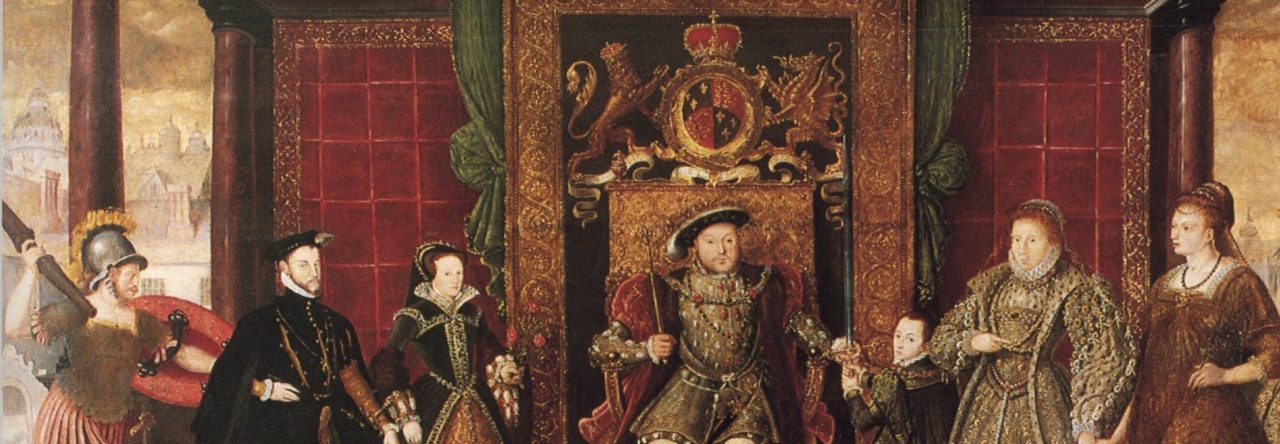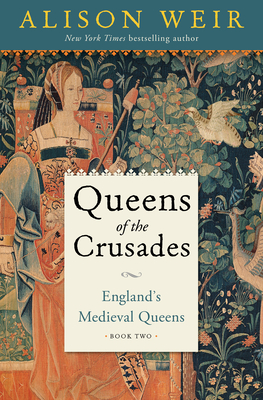 A woman twice widowed with no children of her own has the opportunity to choose who she will marry next. Will she marry the man of her dreams or marry the man who has been married numerous times and has killed two of his wives already? It seems like a no-brainer who she should choose, but the man she married for her third marriage was the man who was married numerous times before simply because he is the notorious King Henry VIII and you do not disobey the king. However, his last wife, Katharine Parr, is willing to fight for the religious reforms and her stepchildren that she loves dearly. In the last book of the Six Tudor Queens series, “Katharine Parr: The Sixth Wife”, Alison Weir takes her readers on an extraordinary journey to explore who this brave woman was and why she is the one who survived Henry’s last days.
A woman twice widowed with no children of her own has the opportunity to choose who she will marry next. Will she marry the man of her dreams or marry the man who has been married numerous times and has killed two of his wives already? It seems like a no-brainer who she should choose, but the man she married for her third marriage was the man who was married numerous times before simply because he is the notorious King Henry VIII and you do not disobey the king. However, his last wife, Katharine Parr, is willing to fight for the religious reforms and her stepchildren that she loves dearly. In the last book of the Six Tudor Queens series, “Katharine Parr: The Sixth Wife”, Alison Weir takes her readers on an extraordinary journey to explore who this brave woman was and why she is the one who survived Henry’s last days.
I would like to thank NetGalley and Random House/ Ballantine Books for sending me a copy of this novel. I have enjoyed the Six Tudor Queens series so far and I was looking forward to reading the last book. Like many people, I know what happened with Katharine during her marriage to Henry VIII and her fourth marriage to Thomas Seymour, but I am not well informed when it comes to her first two marriages. Katharine Parr has been my favorite wife of King Henry VIII for a while now and I wanted to read a novel about her life, to see what Weir’s interpretation of her life story would be like.
Katharine Parr’s story begins with her childhood and her connection with her family. It was unique to see how her childhood helped shaped what type of queen she would become as her mother pushed hard for her daughters to be well educated. Katharine’s first husband, Sir Edward Burgh, was just a boy who followed whatever his father, Sir Thomas Burgh, asked him to do. I think Weir has a unique spin on Katharine’s life with Edward Burgh and their marriage, but it did not last long as Edward Burgh would die in 1533.
Katharine’s second husband, John Neville 3rd Baron Latimer, was her longest marriage. Although they had no children of their own, like Katharine’s marriage to Edward Burgh, it was a happy relationship. They may have differed when it came to their views on religion, but they did seem to love each other. Their happy household was thrown asunder when the Pilgrimage of Grace and Robert Aske knocked on their door and asked for help. There was a real sense of danger during this episode and the bravery that Katharine showed was nothing short of astounding.
When John died, Katharine was left with a choice of who her third husband would be; either the ailing Henry VIII or the suave and debonair Thomas Seymour who deeply loved Katharine. Katharine’s choice was Henry VIII who she hoped she could sway to accept the religious reforms that she believed in strongly. She developed a friendship with the king and his children, but she was still in love with Thomas Seymour. She wrote books during this time that gave her comfort during the difficult times when the court tried to attack her for what she believed and wanted to pit her against Henry. In the end, love triumphed over sorrow and Katharine survived to live with her beloved until the end of her days.
I found this book an absolute treat to read. As someone who loves Katharine Parr and her story, this novel just made me love her even more. The one problem that I had was actually with the spelling of her name as Weir spelled it a bit differently than what I am used to, but it was really a minor detail. I am a bit sad that this is the last book in this wonderful series, but this book was worth the wait.
This novel was a delight to read. It was full of action and intrigue, intense love, and immense sorrow. Katharine was one remarkable woman, just like every wife of Henry VIII Weir has written about in this marvelous series. “Katharine Parr: The Sixth Wife” by Alison Weir is a masterpiece in historical fiction and the perfect conclusion to the Six Tudor Queens series that will leave readers satisfied.

 One of the most prominent royal families of English history was the Plantagenets, who reigned for over three hundred years. In the first one hundred years of this family’s infamous history, five kings ruled (the first two are considered kings of the Angevin dynasty): Henry II, Richard I, John, Henry III, and Edward I. These five kings saw England change drastically, but they also participated in the international political landscape of the day, which involved the series of wars that today we simply refer to as the Crusades. The early Plantagenet kings saw much bloodshed and war, but they were not alone in their struggle to keep the dynasty going. These men would not have gotten as far as they did without their wives who stood by their sides. In Alison Weir’s latest installment of England’s Medieval Queens series, “Queens of the Crusades”, she takes a deep dive into the lives of the first five Plantagenet queens to show how remarkable these women truly were to stand beside their husbands during the times of the Crusades in Europe.
One of the most prominent royal families of English history was the Plantagenets, who reigned for over three hundred years. In the first one hundred years of this family’s infamous history, five kings ruled (the first two are considered kings of the Angevin dynasty): Henry II, Richard I, John, Henry III, and Edward I. These five kings saw England change drastically, but they also participated in the international political landscape of the day, which involved the series of wars that today we simply refer to as the Crusades. The early Plantagenet kings saw much bloodshed and war, but they were not alone in their struggle to keep the dynasty going. These men would not have gotten as far as they did without their wives who stood by their sides. In Alison Weir’s latest installment of England’s Medieval Queens series, “Queens of the Crusades”, she takes a deep dive into the lives of the first five Plantagenet queens to show how remarkable these women truly were to stand beside their husbands during the times of the Crusades in Europe.